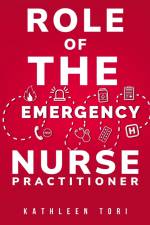av Kathleen Tori
851
In Victoria, Australia, the introduction of Emergency Nurse Practitioners (ENPs) to the health care team in Emergency Departments (EDs) effectively contributed to care for patients with minor illnesses and minor injuries. These advanced nurses treat low acuity patients in an attempt to compensate for the shortage of medical staff in EDs. The implementation of the ENP role has enabled experienced Emergency Nurses to extend their SOP include ordering diagnostic investigations and prescribing medications for minor presentations, allowing care from initial presentation through to disposition. The ENP specialty is the fastest growing of the Australian Nurse Practitioner (NP) models: experiencing a 61% increase in numbers during the period 2010-2013 (Jennings, McKeown, O'Reilly, & Gardner, 2013) the ENP specialty represents approximately onethird of the total Australian endorsed NPs (Middleton, Gardner, Gardner, & Della, 2011). However, the introduction of a new level of nursing within an already well-established ED team has disrupted traditional understandings about the roles and responsibilities of nurses within the ED (Person & Spiva, 2013). Clarification of the ambiguities surrounding the ENP role, SOP, and model of care remains elusive despite the fact that the NP role was introduced nationally in 2000 and in the State of Victoria in 2004 (Driscoll, Worrall-Carter, O'Reilly, & Stewart, 2005; Lowe, Plummer, O'Brien, & Boyd, 2012).

